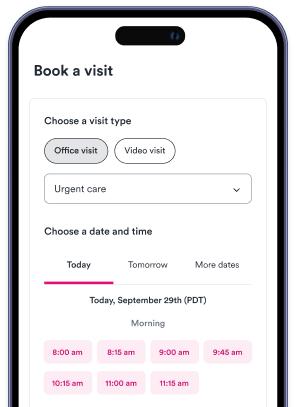Key points
- Flu viruses circulate year-round, with fewer cases in summer due to the similarity between flu and common summer colds, leading to misdiagnosis or underreporting.
- Summer flu cases can be attributed to factors like increased global travel, indoor air conditioning, evolving viral strains, weakened immune defenses, and misdiagnosis as a common cold.
- Summer flu symptoms are similar to those in winter, but may be overlooked due to vacation schedules, heat-related fatigue, or assumptions that it’s just allergies or a cold.
- Prevention of summer flu relies on reducing exposure, strengthening immune defenses, staying current with vaccinations, practicing good hygiene, avoiding close contact with sick individuals, supporting the immune system, and regularly cleaning and disinfecting high-touch surfaces.

When most people think of the flu, they picture cold weather, holiday travel, and bundled-up crowds — not sunshine, shorts, and summer break. But while flu season typically peaks in the fall and winter, that doesn’t mean the virus disappears when the temperatures rise. In fact, many people are surprised to find themselves dealing with flu-like symptoms well into the summer months. So what’s going on? Read on as we break down the myth of a “winter-only” flu and explore why you can still get sick when it’s 90 degrees outside.
Can you really get the flu in the summer?
Yes, you can absolutely get the flu in the summer! In fact, flu viruses circulate year-round, even though they’re most active in the fall and winter. Summer flu cases might seem unusual because we often associate influenza with chilly weather and seasonal outbreaks, but warmer temperatures don’t eliminate the virus entirely. Instead, cases tend to be fewer and more scattered, which is why they don’t draw as much public attention.
What often adds to the confusion is the similarity between the flu and common summer colds, both of which can cause fatigue, cough, sore throat, and congestion. However, the flu typically hits harder and faster, with more intense symptoms like high fever, body aches, and extreme exhaustion. According to the National Institute of Health (NIH), summer colds, usually caused by other viruses like enteroviruses or rhinoviruses, tend to be milder and shorter in duration. So while less common, summer flu is real — and it’s worth knowing the difference to take the right steps toward care and prevention.
5 Reasons why people still catch the flu during summer
Although flu season typically peaks between October and February in the U.S., influenza viruses don’t completely vanish once the weather warms up. Instead, they continue to circulate at lower levels throughout the year, meaning it's entirely possible to catch the flu in the summer. Several factors contribute to summer flu cases, from increased global travel and indoor air conditioning to evolving viral strains and weakened immune defenses. The NIH explains that these variables create perfect conditions for the virus to spread quietly and unexpectedly, especially since many people let their guard down outside of flu season.
1. Travel and increased exposure
One major contributor to the summer flu is international travel. While it may be summer in the Northern Hemisphere, countries in the Southern Hemisphere — like Australia, South Africa, and parts of South America — experience their winter flu season during this same time. Travelers heading to or returning from these regions can easily carry the virus with them, sparking new cases upon arrival. In addition, busy airports, airplanes, and crowded public transportation systems act as ideal environments for flu viruses to spread. Close quarters and shared airspace dramatically increase the likelihood of exposure, especially when people aren’t expecting or guarding against illness.
2. Indoor air conditioning
Ironically, one of summer’s comforts — air conditioning — may also contribute to summer flu susceptibility. Cold, dry indoor air can irritate the nasal passages and respiratory tract, weakening the body’s natural barriers to infection. Moreover, viruses tend to survive longer in cooler, low-humidity environments, meaning temperature-controlled spaces like offices, malls, and hotels may support the flu virus’s longevity and transmission. As people cycle in and out of these environments, often spending extended hours indoors to escape the heat, the chance of contracting and spreading the virus increases.
3. Evolving flu strains
Another reason flu cases can persist through the summer is the virus’s natural ability to mutate. Influenza viruses are constantly evolving, and small genetic shifts can result in strains that cause infections outside the traditional flu season. These changes make it harder for the immune system to recognize and fight off the virus, especially if the strain is different from what circulated during the previous winter. Additionally, with people traveling across hemispheres, viruses can jump borders and seasons — bringing active flu strains from wintertime regions into warm-weather areas where populations may be less prepared.
4. Compromised immunity
Even though summer is associated with rest and relaxation, many people experience stressors that can weaken their immune defenses. Busy travel itineraries, disrupted sleep schedules, and overexertion from outdoor activities can all take a toll on the body. Dehydration from high temperatures and prolonged sun exposure further depletes the immune system, making it harder to fend off infections like the flu. Children, older adults, and individuals with chronic conditions may be especially vulnerable during these times, even if they feel generally healthy otherwise.
5. Misdiagnosis as a common cold
Summer flu often goes unrecognized because its symptoms can overlap with those of the common cold, leading to misdiagnosis or underreporting. However, key differences exist. The flu usually comes on suddenly and includes more severe symptoms such as high fever, body aches, chills, fatigue, and a persistent dry cough. In contrast, a cold tends to develop gradually and is more likely to cause mild congestion, a runny nose, and a sore throat without the intense body-wide symptoms. Because many people don’t expect the flu in summer, they may mistake it for a harmless cold and unknowingly spread it to others.
Symptoms of summer flu to watch for
Because summer flu is unexpected, it’s easy to dismiss early symptoms or confuse them with other common warm-weather illnesses. However, recognizing the signs early can help you take appropriate steps — both to recover quickly and to avoid spreading the virus to others.
While the symptoms of flu in the summer are largely the same as those in winter, they may be more easily overlooked due to vacation schedules, heat-related fatigue, or assumptions that it’s "just allergies" or a cold. Knowing what to look for is key to distinguishing flu from other seasonal health issues.
Typical flu symptoms
- Fever and chills are hallmark signs, frequently accompanied by muscle or body aches that make simple tasks feel exhausting.
- Many people also experience a sore throat and nasal congestion, which can make the flu easy to confuse with a cold at first.
- Fatigue is often pronounced, sometimes lasting for days, and is usually paired with a persistent, dry cough.
- Headaches and general discomfort are also common.
Together, these symptoms often come on suddenly and escalate quickly, unlike the more gradual onset of a cold.
Signs that it’s more than just a cold
Some symptoms can help you tell the difference between a common cold and a case of summer flu:
- A high fever, typically above 101°F, is much more characteristic of the flu than a cold.
- The abrupt onset of symptoms is another clue, as colds tend to develop slowly over a few days, while flu symptoms often strike within hours.
- Severe body aches and overall weakness are also red flags, as colds rarely leave people feeling completely drained.
If you find yourself suddenly wiped out and unable to get out of bed, flu is a more likely culprit than a mild viral cold.
When symptoms are severe
In some cases, flu symptoms can escalate and signal a more serious infection that requires medical attention:
- Difficulty breathing or chest pain should never be ignored and may indicate complications like pneumonia.
- A persistent high fever, especially one that doesn’t respond to over-the-counter medications, can also be a warning sign, particularly in children, older adults, or individuals with underlying health conditions.
- Dizziness, confusion, or sudden disorientation may suggest that the flu has led to dehydration or impacted the nervous system.
If you or a loved one experiences any of these severe symptoms, it’s crucial to seek urgent care or emergency services.
How to treat a summer flu at home
Like the winter flu, most mild to moderate summer flu cases can be treated effectively at home with proper care, rest, and supportive remedies. The goal is to help your body fight off the virus, manage discomfort, and prevent spreading it to others. Below are key home treatment strategies to help you feel better faster and reduce the risk of complications.
Rest and hydration
Your body needs energy to fight off infection, so rest is essential. Take time off from work, school, and social activities to allow your immune system to do its job. Even if your symptoms feel mild, pushing through them can prolong recovery and increase the risk of spreading the flu. At the same time, staying hydrated is crucial. Fever can lead to fluid loss, so drink plenty of water throughout the day. Clear broths, electrolyte drinks, and soothing herbal teas can help replenish fluids and ease symptoms like sore throat or congestion. Avoid alcohol and caffeine, which can dehydrate you further.
Over-the-counter relief
While there’s no cure for the flu, over-the-counter (OTC) medications can help manage symptoms and make you more comfortable as your body heals. Pain relievers like ibuprofen or acetaminophen can reduce fever, body aches, and headaches. Be sure to follow dosing instructions and avoid taking more than one medication with the same active ingredient. OTC options such as decongestants or cough suppressants may provide relief for respiratory symptoms like coughing or congestion. If your symptoms are persistent or severe, seek care from a healthcare provider to ensure you use the right treatments safely.
Self-care
Small self-care practices can go a long way in easing discomfort and speeding up your recovery. Using a cool mist humidifier can help add moisture to dry indoor air, which soothes irritated nasal passages and reduces coughing. For a sore throat, try warm salt water gargles several times a day — they can temporarily reduce pain and inflammation. When it comes to food, stick to light, nourishing meals like soup, toast, or oatmeal. Your appetite may be low, but eating small portions of easy-to-digest foods can give your body the nutrients it needs to recover without overloading your system.
When to visit urgent care for a summer flu
While many summer flu cases can be managed at home, there are times when seeing a medical professional is the safest and smartest option. Urgent care centers are equipped to diagnose and treat flu symptoms quickly, especially when symptoms worsen or complications arise. Visiting urgent care can also help you confirm whether your illness is truly influenza or something else entirely, such as COVID-19, strep throat, or a bacterial infection. Early evaluation can lead to faster relief and reduce the risk of more serious health issues, particularly for vulnerable individuals like young children, older adults, or those with chronic health conditions.
Red flags that need medical attention
Some symptoms go beyond the scope of home care and signal the need for immediate medical attention:
- If you’re experiencing trouble breathing, shortness of breath, or chest pain, these could be signs of pneumonia or other respiratory complications.
- A severe headache or stiff neck may suggest neurological involvement, such as meningitis, which requires urgent evaluation.
- Persistent vomiting or diarrhea can also quickly lead to dehydration, especially in hot weather, and may warrant IV fluids.
Don’t hesitate to seek care if your symptoms escalate or you feel significantly worse after the first few days of illness.
Getting tested for influenza
Urgent care clinics often offer rapid influenza diagnostic tests (RIDTs), which can detect the flu virus in a matter of minutes. These tests are especially helpful when symptoms appear outside the typical flu season, helping to distinguish between the flu and other illnesses with overlapping symptoms. Early testing can guide treatment decisions, prevent unnecessary antibiotic use, and reduce the risk of spreading the virus. If you’re unsure whether you have the flu, a quick visit to urgent care can provide clarity and peace of mind, along with a care plan tailored to your needs.
Antiviral medication for a summer case of influenza
If you’re diagnosed with influenza early enough — typically within the first 72 hours of symptom onset — your provider may prescribe an antiviral medication such as oseltamivir (commonly known as Tamiflu). Antiviral medications can shorten the duration of illness, ease the severity of symptoms, and lower the risk of complications, especially in people with underlying health issues. They are the most effective when started early, so prompt testing and treatment are key. While not everyone with the flu will need these medications, they can be a valuable tool for managing more severe or high-risk cases, even in the middle of summer.
How to prevent the flu during the summer months
While the flu may not be top of mind during the warmer months, it’s still important to take proactive steps to reduce your risk, especially if you're traveling or spending time in crowded indoor spaces. Summer flu prevention relies on the same principles used during peak flu season: reducing exposure, strengthening your immune defenses, and staying current with vaccinations. Here are a few tips to ensure your family’s health this summer:
Stay up to date with the flu vaccine
Vaccination remains the most effective defense against the flu, according to the CDC — even in the summer months. While most people receive their flu shot in the fall, it’s worth considering a vaccination during the summer if you’re traveling internationally, particularly to countries in the Southern Hemisphere where flu season peaks midyear. For high-risk groups — such as older adults, children under five, pregnant individuals, and those with chronic medical conditions — the CDC stresses that staying up to date with annual flu shots is especially important, as these populations are more susceptible to complications from influenza.
Practice good hygiene
Maintaining good hand hygiene is one of the simplest and most effective ways to prevent flu transmission. The CDC recommends that you wash your hands frequently with soap and water, scrubbing for at least 20 seconds — especially after being in public places, using the restroom, or before eating. When soap and water aren’t available, use an alcohol-based hand sanitizer with at least 60% alcohol. This helps kill most flu viruses and other germs you might pick up on shared surfaces like doorknobs, handrails, or touch screens, especially in busy summer spots like airports, festivals, or hotels.
Avoid close contact with sick individuals
The flu spreads easily through respiratory droplets, so avoiding close contact with people who appear sick can help limit your exposure. This is particularly important in high-traffic areas like public transit, crowded tourist sites, or airplanes. If you can’t avoid being near someone who is coughing or sneezing, try to keep a reasonable distance, avoid touching your face, and wash your hands afterward. If you’re the one feeling unwell, it's equally important to stay home and avoid close contact with others to prevent passing the virus along.
Support your immune system
A strong immune system can help your body fight off infections more effectively, including the flu. To help boost your immune system, prioritize a diet full of colorful fruits, vegetables, lean proteins, and whole grains to supply your body with immune-supportive nutrients like vitamin C, zinc, and antioxidants. Staying hydrated is just as critical in the summer, especially with added fluid loss from heat. Aim for 7 to 9 hours of quality sleep each night, as rest is essential for immune regulation and recovery. When you consistently care for your body, you give it the best chance to defend itself against viruses.
Clean and disinfect surfaces
Whether you're at home or on the go, regularly cleaning and disinfecting high-touch surfaces can help reduce the risk of catching or spreading flu viruses. This includes objects like cell phones, remote controls, doorknobs, faucet handles, and airplane tray tables. When traveling, bring disinfectant wipes to sanitize items you frequently touch in public spaces. Viruses can linger on surfaces for several hours, so staying vigilant with cleaning, especially in shared environments, adds an important layer of protection during the summer months.
Get treatment for summer flu symptoms at an urgent care near you
If you're experiencing flu symptoms and need quick, reliable care, Solv makes it easy to find urgent care near you. With same-day appointment options and real-time availability, you can skip the long waits and get the treatment you need—fast. Whether it’s to confirm a diagnosis, receive supportive care, or start antiviral medication early, Solv connects you with trusted clinics in your area so you can feel better, sooner.
FAQs
Can you get the flu during the summer?
Yes, it is possible to get the flu during the summer. Flu viruses circulate year-round, and while they are most active during the fall and winter, they do not disappear in warmer weather. Cases of flu in the summer tend to be fewer and more scattered, which is why they don't draw as much public attention.
How can you tell the difference between a summer cold and the flu?
The flu typically hits harder and faster than a cold, with more intense symptoms like high fever, body aches, and extreme exhaustion. Summer colds, usually caused by other viruses, tend to be milder and shorter in duration. If you have a sudden onset of severe symptoms, it's more likely to be the flu than a cold.
What factors contribute to people getting the flu during the summer?
Several factors can contribute to summer flu cases. These include increased global travel, indoor air conditioning, evolving viral strains, weakened immune defenses, and misdiagnosis as a common cold. These factors create conditions for the virus to spread quietly and unexpectedly.
What are the symptoms of the flu during the summer?
The symptoms of the flu during the summer are largely the same as those in the winter. They include fever, chills, muscle or body aches, sore throat, nasal congestion, fatigue, headache, and general discomfort. These symptoms often come on suddenly and escalate quickly.
How can you prevent getting the flu during the summer?
Preventing the flu during the summer relies on reducing exposure, strengthening your immune defenses, and staying current with vaccinations. Other preventative measures include practicing good hygiene, avoiding close contact with sick individuals, supporting your immune system through a healthy diet and adequate sleep, and regularly cleaning and disinfecting high-touch surfaces.









